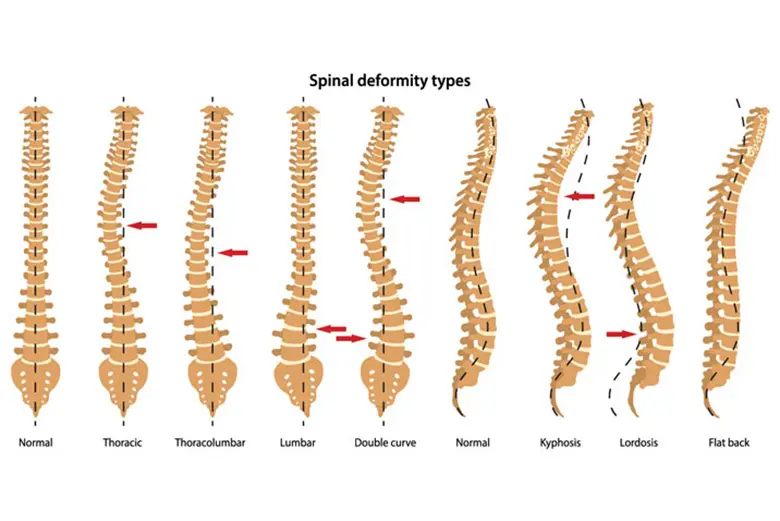Corrective Spine Osteotomy
What is corrective spine osteotomy?
Corrective spine osteotomy is a surgical procedure to correct the abnormal curvature of your spine. The procedure is done to shorten or lengthen some of the bones in your spine and fuse them together in the correct alignment.
A normal spine is naturally curved in 3 places:
- The cervical spine, or the spine in the neck area, has an inward curve (lordosis)
- The thoracic spine, or the spine of the upper and mid-back, has an outward curve (kyphosis)
- The lumbar spine, the spine in the lower back, has an inward curve (lordosis)
These curves work together to keep your body stable and aligned over the pelvis. Corrective osteotomy corrects and stabilises the spine in its right position.
Types of treatment
Corrective spine osteotomy can be divided into different procedures. Your doctor will recommend the most suitable procedure to improve your condition:
Posterior column osteotomy (PCO)
Sometimes just called an osteotomy, a PCO removes some bone from the back of the vertebral arch to provide 10 – 20 degrees of correction at one or more levels.
A PCO generally helps to correct long, gradual curves of an outward curve (kyphosis) which may be caused by conditions such as ankylosing spondylitis. Compared to the other types of spinal osteotomy, a PCO removes the least amount of bone.
Pedicle subtraction osteotomy (PSO)
A PSO removes the vertebral arch, part of the vertebral body and the pedicles that connect the arch to the vertebral body.
It produces about 30 degrees of correction and may be performed in one or more vertebrae to treat conditions such as flatback syndrome or sharp, angular outward curves (kyphosis). A PSO removes more bone than a PCO.
Vertebral column resection (VSR)
A VSR removes the entire vertebrae and replaces it with bone grafts and implants known as cages.
While the grafts heal, screws and rods are used to restore spinal stability. It provides around 80 degrees of correction to correct sharp curves and removes the most bone.
Spinopelvic fixation
In spinopelvic fixation, screws, rods or other implements are used to connect the base of the spine to the surrounding bones of the pelvis.
This is done to reduce the pressure of bending and rotation which occurs at the junction between the lumbar spine and sacrum.
Why do you need corrective spine osteotomy?
Your doctor may recommend corrective spine osteotomy if the abnormal curvature of your spine is more severe. This could mean a kyphosis (hunching) of 70 degrees or more or scoliosis (sideways curve) of 45 degrees or more.
Corrective spine osteotomy can help to:
- Reduce pain
- Reduce fatigue as your upper body will be supported by a straighter spine
- Correct your posture and allow you to stand upright, improving your physical appearance
- Relieve pressure on organs such as the heart and lungs
- Prevent the deformity from getting worse
What are the risks and complications of corrective spine osteotomy?
The risks associated with spinal osteotomy depends on your overall health and may include:
- Bleeding
- Infection
- Nerve damage
- Damage to the spinal column











